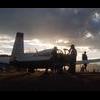Mooney IFR Students' Thread
-
Members Online
- LANCECASPER
- Max Clark
- 201Steve
- midlifeflyer
- rally
- Hradec
- mike_elliott
- drewg
- Parker_Woodruff
- bluehighwayflyer
- thomas1142
- donkaye, MCFI
- Hank
- Marc_B
- BrentS
- ElkoRandy20J
- hypertech
- peterl
- lou
- Fix
- itsmekw
- Bunti
- cferr59
- CL605
- takair
- redbaron1982
- Ospeed
- Scottknoll
- Rick Junkin
- MatthiasArnold
- Fly Boomer
- Jim F
- gdwinc
- Rogerg
- CVO
- TonyLSAS


Recommended Posts